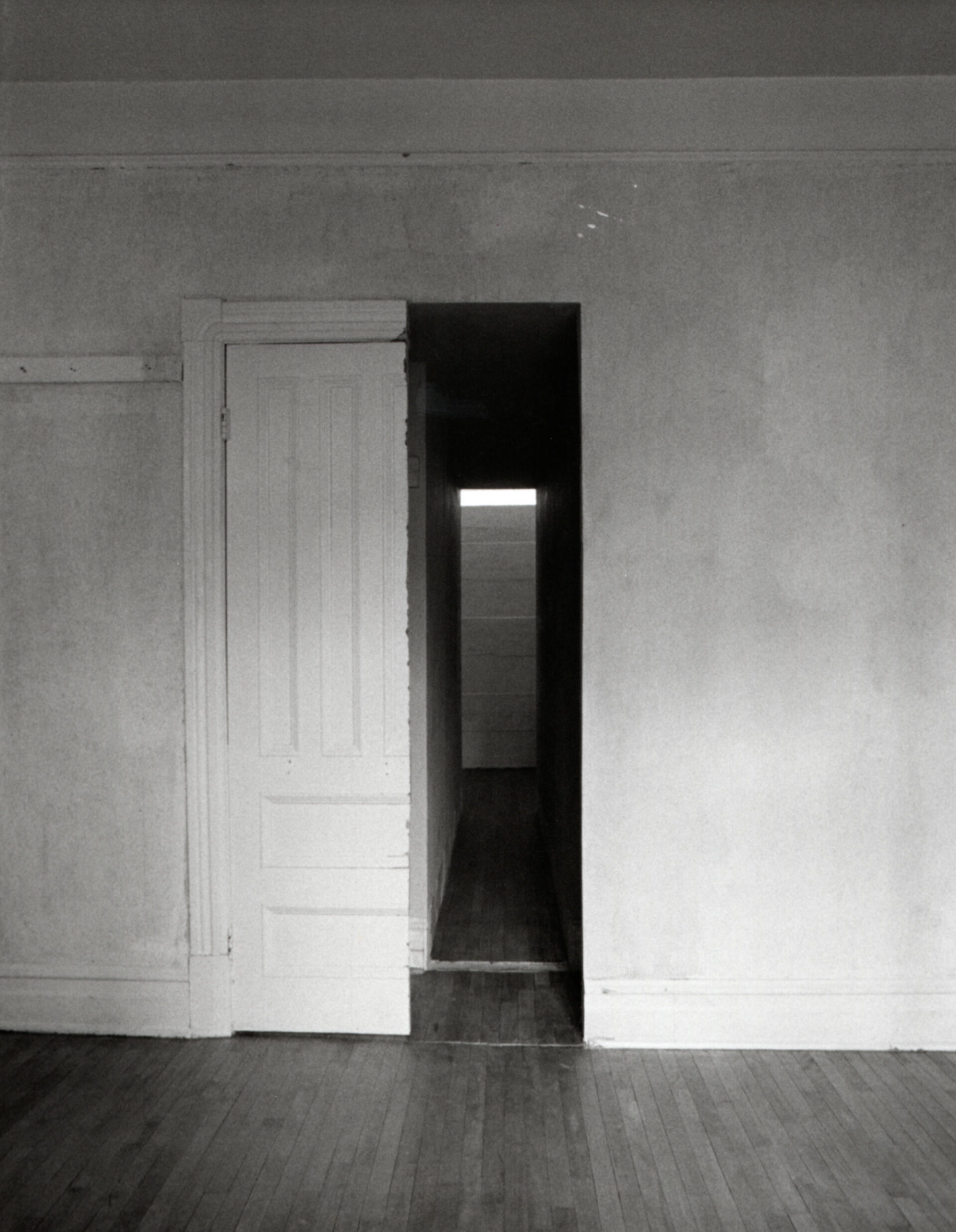The Mentana Street Project 1979

Betty Goodwin, The Mentana Street Project, 1979
Plaster, graphite, and wax on walls
Montreal
Completed over a period of two years, The Mentana Street Project marked a crucial turning point in Betty Goodwin’s practice at a time when site-specific, multi-element installations were becoming common as a more open and dynamic approach to artmaking.
-
Betty Goodwin, The Mentana Street Project (detail), 1979
Plaster, graphite, and wax on walls
Montreal
-
Betty Goodwin, The Mentana Street Project (detail), 1979
Plaster, graphite, and wax on walls
Montreal
-
Betty Goodwin, The Mentana Street Project (detail), 1979
Plaster, graphite, and wax on walls
Montreal
-
Betty Goodwin, The Mentana Street Project (detail), 1979
Plaster, graphite, and wax on walls
Montreal
-
Betty Goodwin, The Mentana Street Project (detail), 1979
Plaster, graphite, and wax on walls
Montreal
In this work, which was on view from November 9 to December 22, 1979, Goodwin refashioned an empty ground-floor apartment in a building owned by her gallerist, Roger Bellemare, in Montreal. In its vacant rooms, she could work intuitively and experiment with freedom to engage fully in the process at her own pace. After stripping wallpaper and applying gesso, Goodwin meticulously traced the surface of walls, moving her graphite pencil over imperfections to create a subtle veil of evidence of former life. With the aid of her assistant, Marcel Lemyre (1948–1991), she cut and widened an entrance between two rooms, bringing light through a narrow passage she constructed and lined with clay, embellishing its exterior with gold paint. Joining a back room to the light-filled front parlour, this passage resembled the narrow entrances to ancient tombs. It terminated with a suggested interior chamber consisting of a rectangle of stacked wooden beams, like those used to construct the houses of this period in the neighbourhood, coated with white lime. With her evocative interventions in The Mentana Street Project, Goodwin initiated a theme of passage restated in several subsequent installations.
Space itself became the “found object” upon which Goodwin made site-specific interventions in the Mentana Street apartment and several other locations starting in the late 1970s. Art that was no longer bound by medium or invested in an independent object also proliferated internationally. Significantly, many artists—such as Gordon Matta-Clark (1943–1978), Irene Whittome (b.1942), and Martha Fleming (b.1958) and Lyne Lapointe (b.1957)—were choosing to work outside the constraints of the museum with its emphasis on historical permanence and preservation. Goodwin was aware of these developments and, notably, was reading The Poetics of Space (1958, published in English in 1968) by Gaston Bachelard (1884–1962) when working on The Mentana Street Project.
Goodwin spoke of this project as a response to the space, an exploration of its inherent qualities and her intuitive reactions to them: “What I am trying to do is expand what is already there and to create some new structures related to rooms and dealing with light and scale. I find in the installation the combining of the force of the space and my particular emotional intellectual state of awareness.”
In The Mentana Street Project, absence gave way to a psychologically charged presence. Goodwin’s transformations connected both artist and audience with the lingering atmosphere of life in this recently vacated domestic space, and when the residence was open to the public, she spent several hours a day there as custodian, greeting visitors who wished to speak with her. “It just seemed natural that I would sit there,” she said. “It was OK. I never felt upset or any kind of discomfort with people coming in and talking about the work. It would be very different in a gallery.” This project led to invitations to make other significant installations in Canada and internationally over a particularly fruitful five-year period for Goodwin.

 About the Author
About the Author
 More Online Art Books
More Online Art Books
 Acknowledgements
Acknowledgements